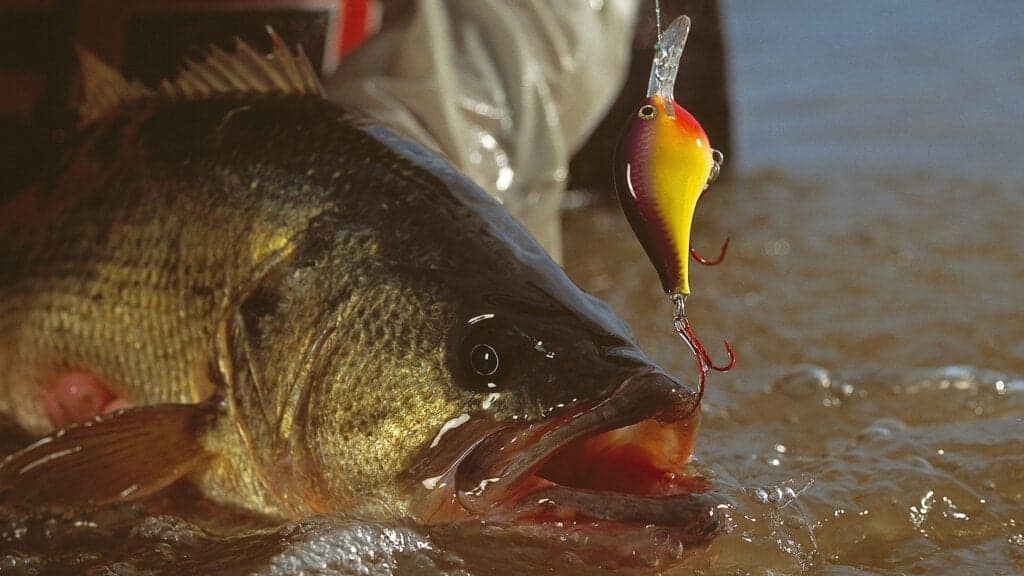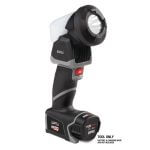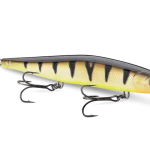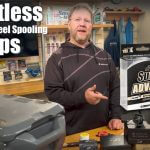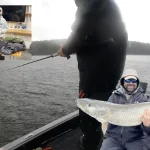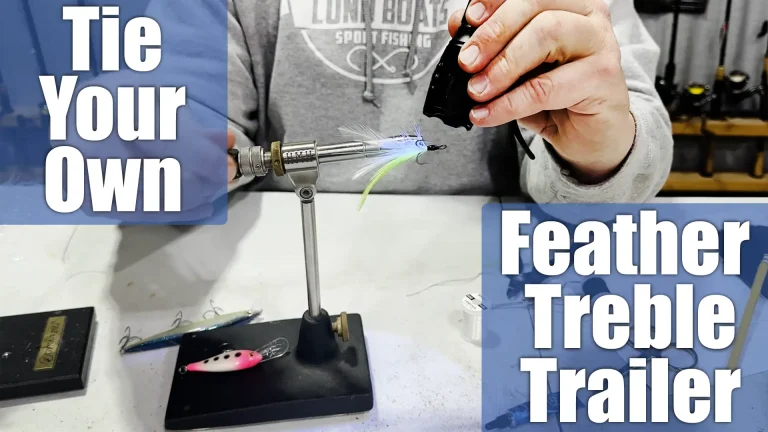Each year there seems to be more buzz around bass fishing, even as popular as the species have been for many years. Bass are the people’s fish and are widely scattered from coast to coast, from central Mexico to southern Canada. And they grow large and are abundant in all sorts of waters. This summer, we’ve seen lots of anglers on our lakes, many of them chasing bass. Tackle manufacturers respond so there’s no lack of bass lures. So it’s timely to present our list of all-time favorites.
Our Best Bass Lures of All-Time
Weedless Frogs
Once vegetation thickens, big bass seek shallow weedy holes to feed. While that move intimidates many anglers, it excites dedicated slop hoppers who relish a hand-to rod challenge in the quagmire of lily pads, algae, and duckweed where these fish reside. Here bass find abundant shade, plus bluegills, shiners, young bullheads, even terrestrial critters like birds and frogs. The weedless frog is your tool and the choice is Terminator’s Walking Frog for the thickest conditions. Its pointed nose pushes through muck, while the weighted body let bass know prey is dancing on their ceiling. Areas with interspersed patches of lily pads are also pricm territory, as they’re often close to deeper water. Bass often feed on their edges or in pockets among pads. The Terminator Popping Frog creates extra commotion that can call out the giants. Work it slowly with a pop-and-pause cadence. This cover calls for you toughest stuff—60-pound Sufix Braid spooled on a big reel and backed by a rod like St. Croix’s Mojo Bass 7-foot 11-inch heavy power model with moderate action. It provides superb casting distance and the length and guts to pull a pig from the densest slop hole.
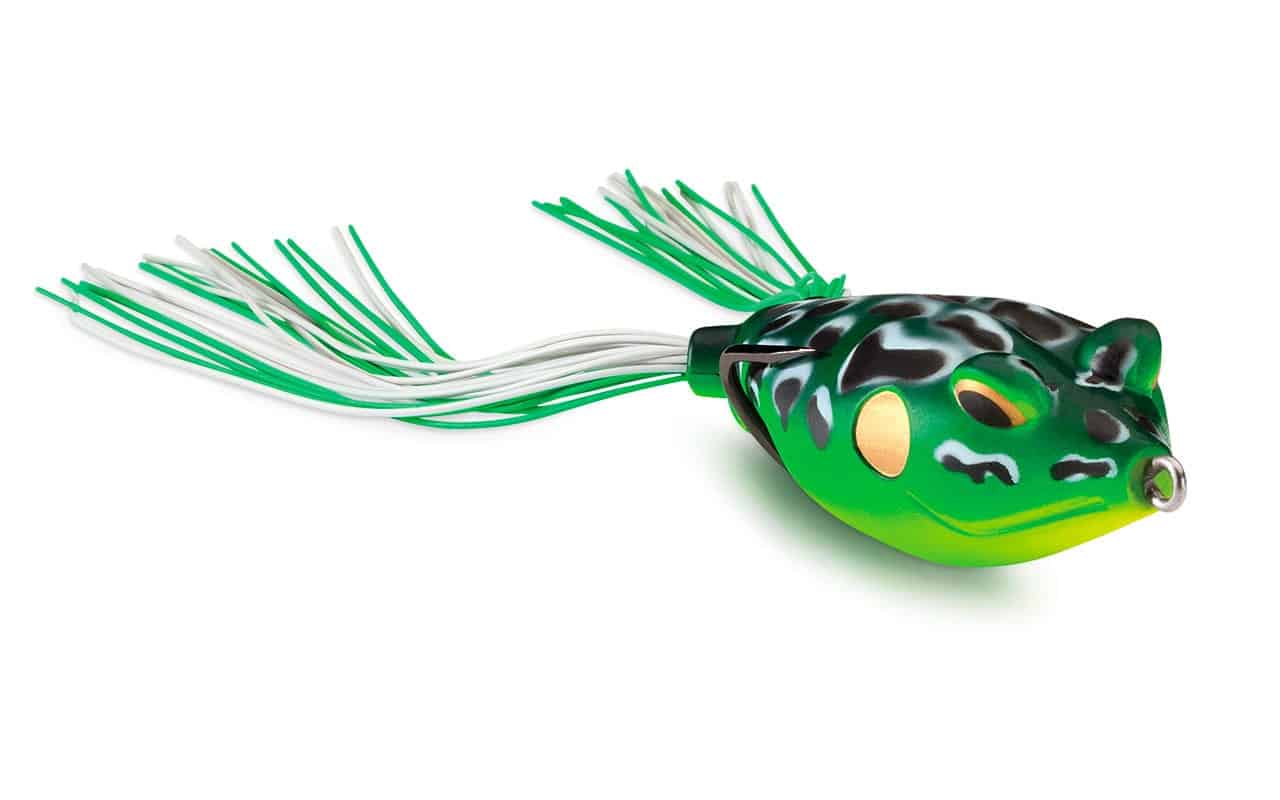
Topwater Lures
When the weather allows, surface fishing is every angler’s dream, as those strikes can be spectacular, whether you’re after largemouths or smallies. For smallmouth bass, it’s hard to beat a popper, whether you’re fishing a river or flat-water system. These curious fish are drawn to surface sounds and swim up to investigate. A little twitch or just a trailing feather treble seals the deal and you have an explosion on your hands.
Poppers work well for largemouths, too, especially when they hold near visible cover like stumps, fallen trees, or steep bluff banks. A similar erratic retrieve generally gets the job done, though speed can be a plus when bass are chasing shad. Two favorite poppers are Storm’s Arashi Cover Pop and the legendary Rapala Skitter Pop. The Storm 1/2-ounce Cover Pop creates a loud bloop when popped, tempting bass tucked into nearby cover to strike. The Skitter Pop is a smaller and more subtle balsa bait, deadly for fish that are tentative to strike. It floats delicately but delivers a forceful spit when pulled forward, with its tempting tail feather dangling below.
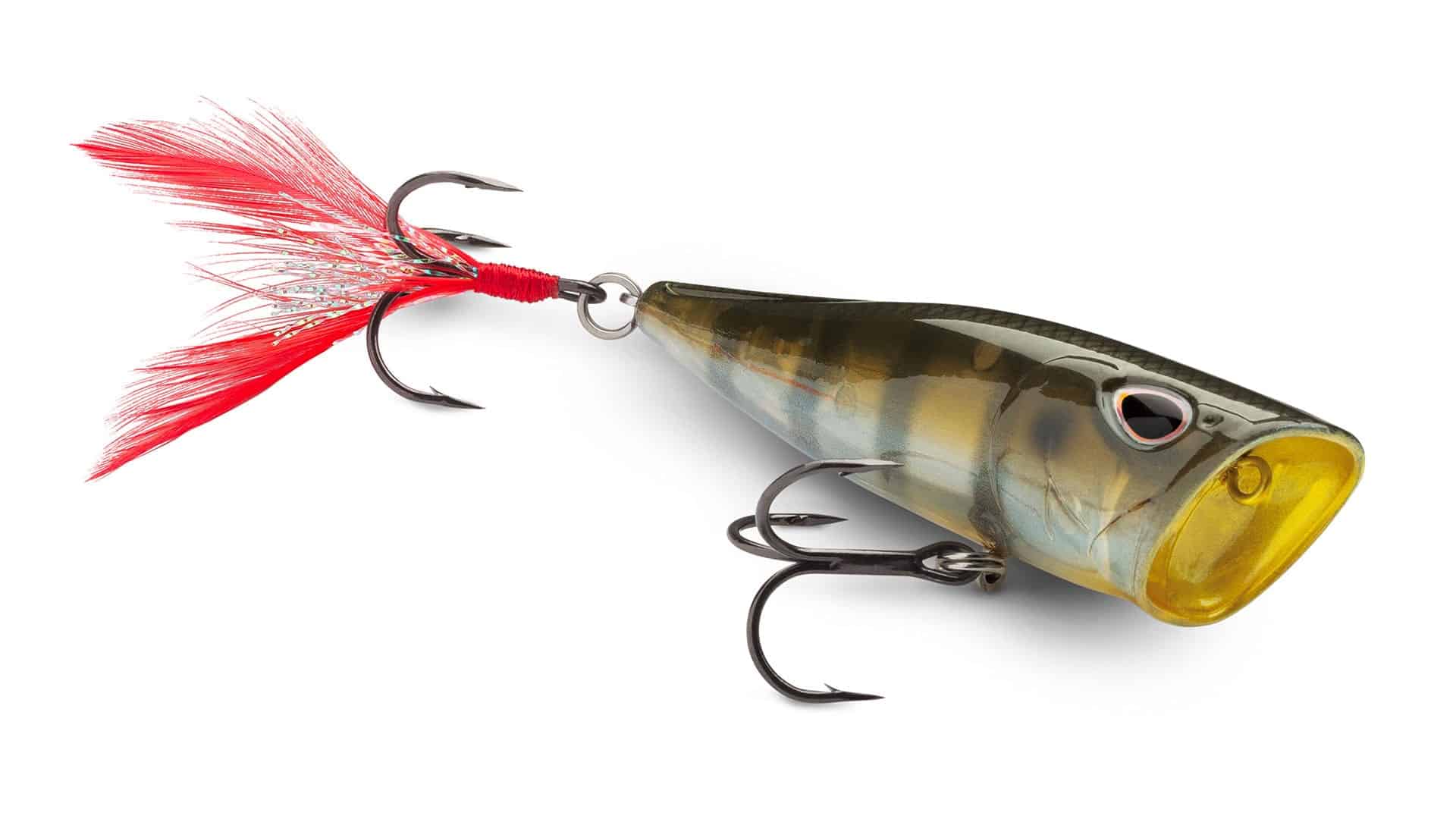
Buzzbaits
We put buzzers in a separate box, as they’re topwaters but with an entirely different application. Not as versatile as hardballs, they’re indispensable around thick shallow cover, such as brush piles and clumpy shallow vegetation. Their commotion also makes them deadly in dark water. Terminator’s Super Stainless Buzzbait has a flattened head to help it plane quickly, then stay on the surface at a slow retrieve that typically works best with this lure. A premium VMC hook set well back from the blade enhances hook-ups. To create even more surface disturbance, choose the Tandem Buzz, which sports two counter-rotating blades that help it track true while creating some serious vibration and splash. It strep frame is 30 percent more bend-resistant than other models, too it stands up to the tough cover where bass bury themselves.

Crankbaits
Unfortunately, on most days, the surface bite can be sporadic or only hot at first light or toward evening. Bass feed at various depths throughout the day, hence the overwhelming value of crankbaits built to explore depth ranges from 2 to 20 feet. That’s where Rapala’s DT Series (stands for Dives To) of balsa cranks delivers its value. Models range from DT 4 to DT 20, denoting the approximate diving depth of the lure on a long cast with 10- or 12-pound line. Perhaps the most versatile for fishing vegetation, wood, or rock is the DT 6, a true bite size bait that scoots into the cover, but backs back up when the retrieve is paused, avoiding snags. It has a subtle erratic hunting action that bass can’t resist, hence its universal popularity.
For fishing colder waters off spring and fall, anglers across the country cherish th Storm Wiggle Wart, with its long and broad bill that gives it a unique skittering action that’s thought to say “crawfish” in a bass’ brain. Whatever its cue, expert anglers wouldn’t be without it when targeting rocky banks, riprap, areas, and bluffs. Work it slowly and methodically with occasional pauses. Its body and bill shape give it a unique deflecting action that has universal appeal.
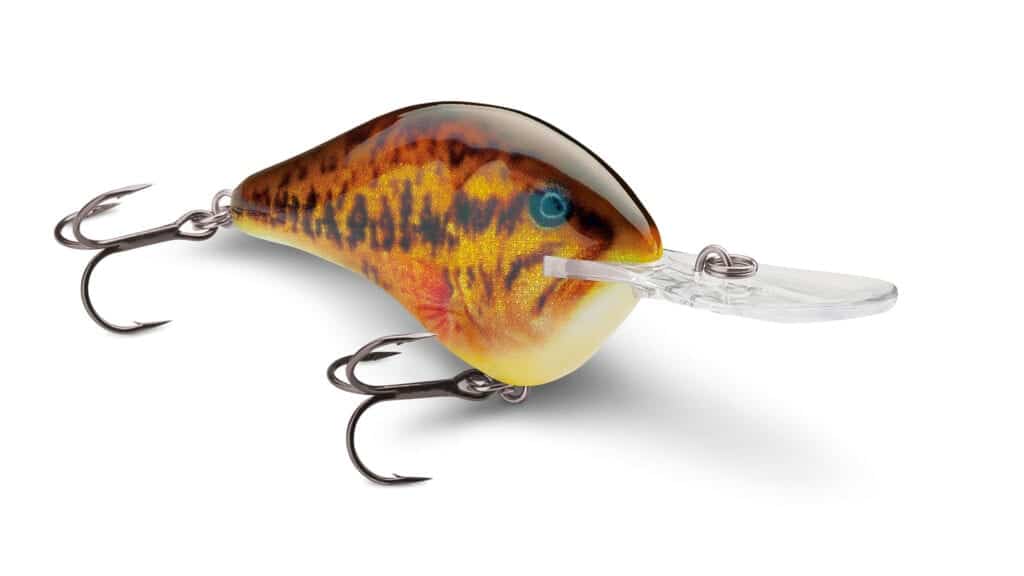
Spinnerbaits
Here’s a classic lure that had fallen out of use with the arrival of newer styles. But their combination of flash, vibration, and ability to work through cover give spinnerbaits a permanent place in the boat. Moreover, with less use lately, they seem even more effective. Terminator’s Super Stainless Spinnerbait has been a top producer for 3 decades, and is now more versatile then ever, with countless combinations of willowleaf, Colorado, and Oklahoma blades on heads from 1/4 to 1/2 ounce. Blades have beveled edges, which enhance their flash in bright conditions. The Terminator’s wire frame is highly resistant to bending when worked around wood or when seized by a big toothy pike or muskie. Spinnerbaits score in the clearest water, especially when worked fast, and have enough thump and vibration to attract bites in murky water and after dark.
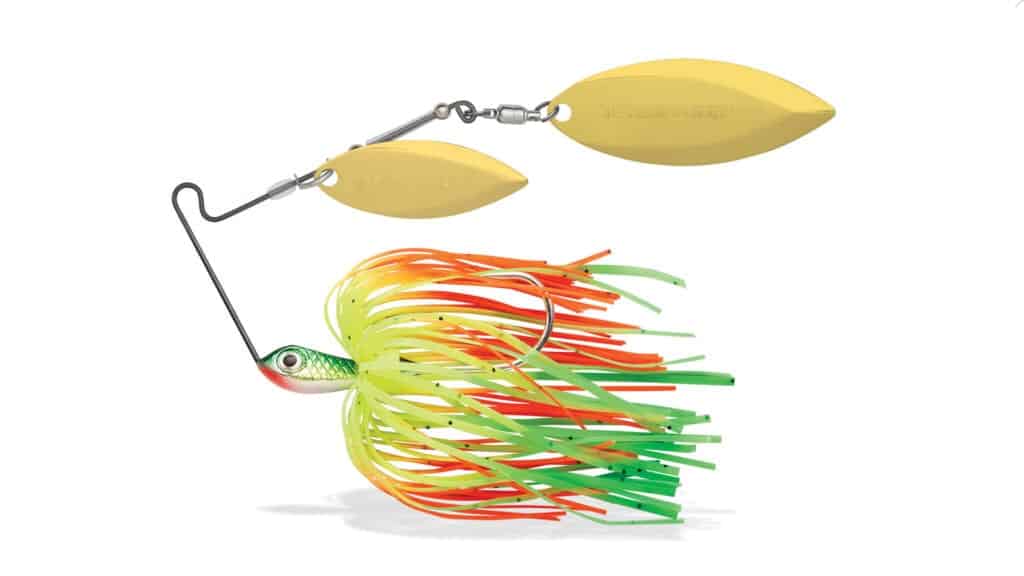
Jerkbaits
Not all anglers like to fish jerkbaits because they can be tiresome to work with rapid retrieves, bass love ‘em most of the year. Their erratic cadence is the key, and it takes skill, practice, and experimentation to get it right and match their attitude and aggression level. Rapala’s X-Rap has been a long-time favorite for its sharp cutting action and ability to barely suspend, tempting to bass when fished fast or slow. Its many fine finishes turn the heads of largemouths and smallmouths in clear or slightly stained water. Rapala’s new Shadow Rap Shad is an ideal complement, for its larger profile that imitates shad forage. It’s designed and weighted to cut sharply under water, almost 180 degrees when fished on slack line. And its slow rise on a pause imitates a dying shad.

Softbaits
Since the invention of the plastic worm in the 1950s, soft plastics have been at the top of the chart as bass lures. Their consistency provides a lifelike wiggle while their texture encourages bass to hold and even eat the fake. Countless shapes, sizes, and colors give anglers many options to match the location and disposition of bass, given the many ways we rig them. Crayfish are a universal dietary favorite and Big Bite Baits’ Craw Tube is the best crawbait of all, with hollow, ribbed body that provides a gently glide and super-soft consistency. The crayfish claws flare out as it hits bottom, when the bulk of bites occur. It’s deadly in cover of all types from weeds to wood, whether Texas-rigged, flipped, or worked on the novel VMC Tokyo Rig, which has become a staff favorite for its versatility and hook-setting power. For fishing above bottom, it’s hard to beat the Big Bite Cane Stick. It’s an awesome narrow-bodied swimmer, available in 3 sizes from 3.5 to 5 inches to tempt smallmouths and lunker largemouths alike. Its tantalizing wiggle and vibrating tail are deadly worked fast or slow. Rig it on a jighead for deep work in open water or Texpose it on a weighted swimbait hook, such as VMC’s Heavy-Duty Weighted Swimbait Hook. This hook comes in 7 sizes to match all sorts of softbaits, with 1/8- to 3/8-ounce weights to fish deep or shallow.
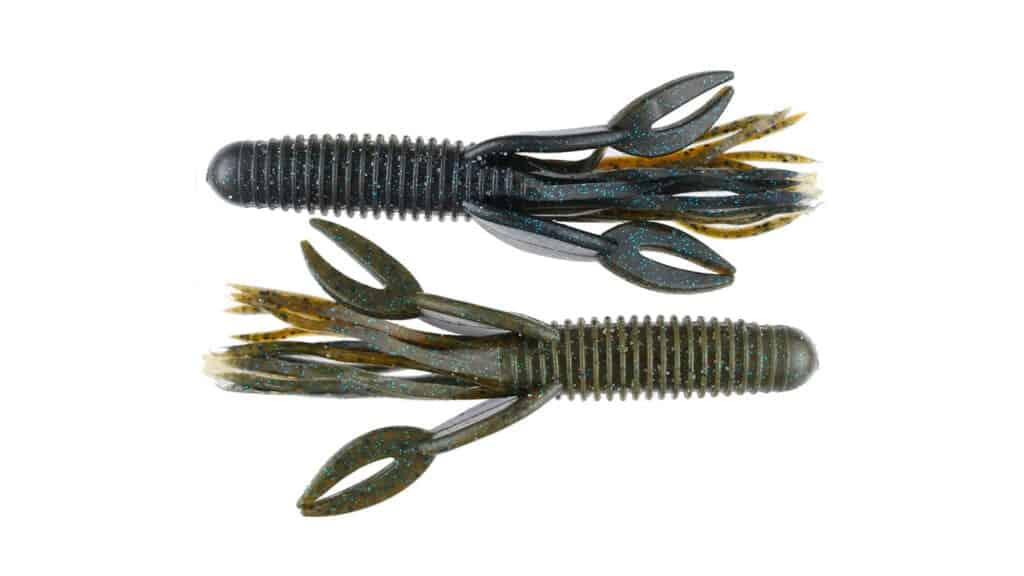
Jigs
No bass box is complete without a selection of jigs, one of the oldest styles of bass lure, but still deadly, especially for outsize fish. The head and weedless design of Terminator’s Pro Series Jig make it effective and versatile for flipping, pitching, or casting, whether bass are in woodcover, grass, or rock. To match any situation, weights from 1/4 to 1 ounce are available. Custom skirt colors and matching fiberguards work in various water colors and to imitate different forms of bass prey, from craws to bluegills to shad. In cold water or any time bass turn finicky, a downsize jig often gets it done. Terminator’s Finesse Jig comes in 3 sizes from 1/8 to 1/4 ounce, and these light heads fall slowly as the specially cut skirt creates a lifelike wiggle. Work it slowly and hang on; even finesse jigs are big-bass catchers.
What is considered to be the first soft plastic bait that started the entire soft plastics subsection of the fishing tackle industry?
The Creme Wiggle Worm is widely recognized as the first soft plastic bait that catalyzed the development of the soft plastics subsection within the fishing tackle industry. Its introduction marked a significant milestone, sparking immediate interest and enthusiasm within the fishing community. Initially sold in packs of five for $1 through mail orders, the Creme Wiggle Worm’s debut at the Cleveland Sportsmen’s Show in 1951 resulted in a remarkable success, with 9,600 packs being sold within just a few days. This instant popularity heralded the beginning of a thriving era for soft plastic baits in the fishing tackle market.
Question 1.
How can different lures be used for bass fishing in various conditions?
What makes topwater lures such as frogs, buzzbaits, ploppers, walkers, and poppers exciting and visually appealing for bass fishing?
Topwater lures like frogs, buzzbaits, ploppers, walkers, and poppers offer a visually appealing and thrilling way to fish for largemouth bass. These lures create commotion on the water’s surface, mimicking natural prey movements and attracting bass to strike. The action of topwater lures is often visible to the angler, making it an exciting experience when a bass strikes the lure on the surface.
Why are certain lures like the Yamamoto Senko, Chatterbait, Spinnerbait, Jig, and Topwater effective in specific fishing conditions?
The Yamamoto Senko is effective in shallow waters or clear conditions due to its natural profile and action that attracts largemouth bass. The Chatterbait and Spinnerbait are great for covering water year-round, with the Chatterbait suited for vegetation and clearer water while the spinnerbait is ideal for dirtier or deeper water. A jig is versatile and can be used in various depths of water throughout the year. Topwater lures provide visual and exciting action that can attract bass in different scenarios.
How can different lures like the Yamamoto Senko, Z-Man Chatterbait, Plastic Worm, Bass fishing jig, Spinnerbait, Walking Topwater, and Swimbait be used to cover most bass fishing scenarios?
These lures can cover various bass fishing scenarios. For example, a plastic worm is versatile and can be fished anywhere, while the Yamamoto Senko is effective when bass are shallow in the spring or in clear water. The Chatterbait and Spinnerbait are great for covering water year-round, with the spinnerbait ideal for dirtier or deeper water and the Chatterbait around vegetation and clearer water. A jig works year-round and can be fished in different depths of water. Topwater lures like frogs, buzzbaits, ploppers, walkers, and poppers offer an exciting and visual way to bass fish.
What are the current best lures for largemouth bass?
The current best lures for largemouth bass include the Yamamoto Senko, Z-Man Chatterbait, Plastic Worm, Bass fishing jig, Spinnerbait, Walking Topwater, and Swimbait.
Here is a direct quote from Passage_1 that answers the question “How can different lures be used for bass fishing in various conditions?”: Once vegetation thickens, big bass seek shallow weedy holes to feed. While that move intimidates many anglers, it excites dedicated slop hoppers who relish a hand-to rod challenge in the quagmire of lily pads, algae, and duckweed where these fish reside. Here bass find abundant shade, plus bluegills, shiners, young bullheads, even terrestrial critters like birds and frogs. The weedless frog is your tool and the choice is Terminator’s Walking Frog for the thickest conditions. Its pointed nose pushes through muck, while the weighted body let bass know prey is dancing on their ceiling. Areas with interspersed patches of lily pads are also prime territory, as they’re often close to deeper water. Bass often feed on their edges or in pockets among pads. The Terminator Popping Frog creates extra commotion that can call out the giants. Work it slowly with a pop-and-pause cadence. This cover calls for your toughest stuff—60-pound Sufix Braid spooled on a big reel and backed by a rod like St. Croix’s Mojo Bass 7-foot 11-inch heavy power model with moderate action. It provides superb casting distance and the length and guts to pull a pig from the densest slop hole. In addition to utilizing weedless frogs in thick vegetation, anglers can also benefit from an array of lures suited for various bass fishing conditions. Lures like the Yamamoto Senko, Z-Man Chatterbait, Plastic Worm, Bass fishing jig, Spinnerbait, Walking Topwater, and Swimbait offer versatility in covering different water depths, clarity, and seasons. For instance, a plastic worm can be fished anywhere, while a Yamamoto Senko excels in shallow or clear water. The Chatterbait and Spinnerbait are effective for covering water year-round, with the Spinnerbait ideal for dirtier or deeper water and the Chatterbait suited for vegetation and clearer water. A jig works well in various conditions throughout the year, from flipping in shallow water to dragging in deeper waters. Finally, topwater lures like frogs, buzzbaits, ploppers, walkers, and poppers provide exciting and visual bass fishing experiences. By incorporating a range of lures tailored to specific conditions, anglers can enhance their bass fishing success in diverse environments.

